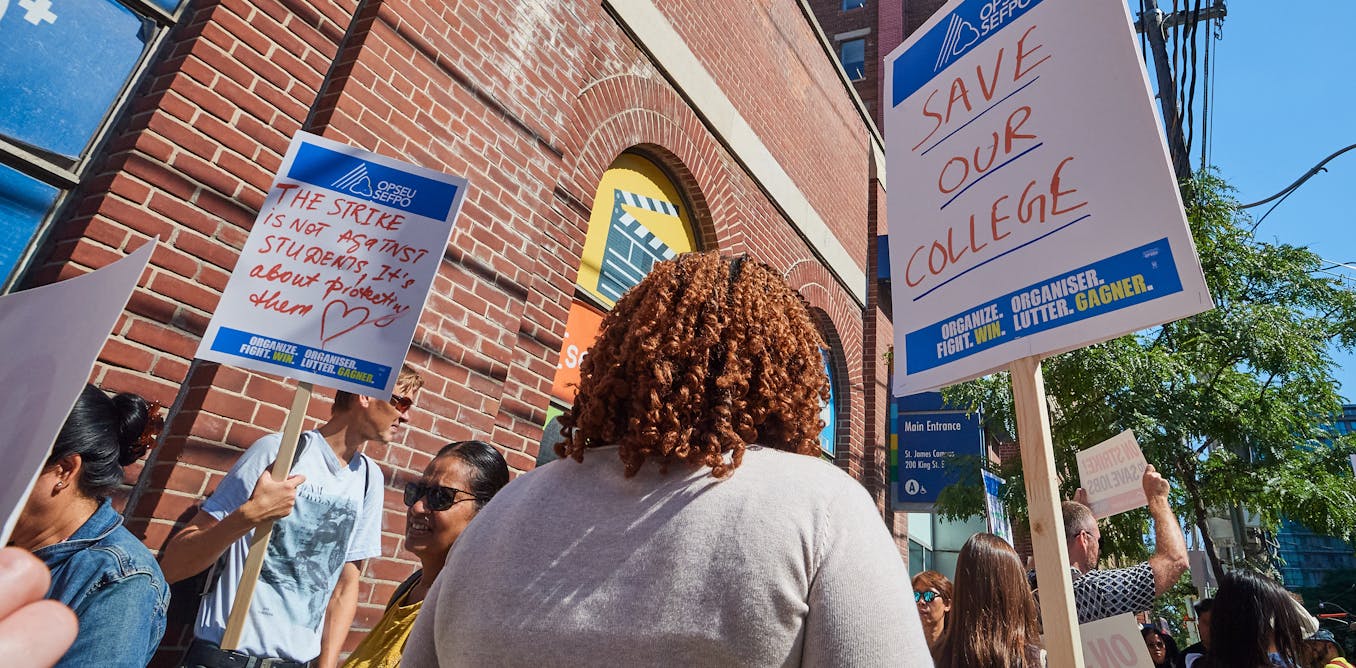Education
Ontario Colleges Face Crisis as Programs Cut and Costs Rise

Ontario’s colleges are grappling with a significant crisis as they face the cancellation of approximately 600 programs over the past year, alongside rising tuition fees and increasing student debt. This situation poses a stark contrast to the founding vision of these institutions, which aimed to provide accessible vocational education tailored to local community needs. As students begin their fall semesters, a closer examination of the colleges’ historical mission highlights the urgent need for reform to safeguard their public purpose.
Historical Context and Founding Vision
The establishment of Ontario’s colleges of applied arts and technology in 1965 marked a transformative moment in the province’s educational landscape. Under the leadership of then-Education Minister William G. Davis, the college system was designed to address the province’s demographic changes and economic demands. The foundational principles emphasized that college programs should be “occupation-oriented” and closely aligned with the long-term economic development of their respective regions.
Davis’s vision was rooted in the belief that colleges would fill gaps left by universities, providing essential training for students for whom traditional university education was unsuitable. A 1967 Department of Education publication echoed this sentiment, stating that colleges would serve a unique role in preparing students for the workforce through practical, community-focused education.
Impact on Economic and Social Development
Today, Ontario’s college system comprises 24 colleges across 200 communities, playing a crucial role in both education and the economy. Since 2018, an average of 140,000 graduates have emerged from these institutions each year, with approximately 83 percent securing employment within six months of graduation. These statistics underscore the colleges’ significance in fostering economic and social development throughout the province.
However, the financial landscape for these colleges has shifted dramatically over the decades. Initially, the majority of operating expenses were covered by provincial funding, with tuition fees playing a minor role. By the late 1980s, per-student funding had already declined by about one-third. This trend accelerated in 1995, when significant cuts to funding prompted colleges to seek alternative revenue streams, including ancillary fees and increased international student enrolment.
Data from the Higher Education Quality Council of Ontario illustrates that total college revenue rose from $972 million in 1992 to $1.6 billion by 2008, primarily driven by student fees, while government funding diminished as a proportion of overall revenue. The reliance on tuition fees intensified between 2010-11 and 2022-23, with provincial grants per student declining by 29 percent when adjusted for inflation, while tuition revenue tripled during the same period.
As of the 2022-23 academic year, Ontario colleges received approximately $11,081 per full-time-equivalent student, significantly below the national average of $19,292. A recent provincial report titled “Ensuring Financial Sustainability for Ontario’s Post-Secondary Sector” highlights the ongoing crisis surrounding funding for these institutions.
The impact of these funding changes has been profound. Students are now confronted with higher tuition fees and limited program options, undermining the original promise of accessible vocational education. This situation disproportionately affects low-income and first-generation Canadian students, who often face significant barriers to access.
The Ontario government’s funding strategy has increasingly focused on immediate economic pressures, particularly in fields such as trades, construction, STEM, and healthcare. Yet, while public funding for colleges diminishes, the Ontario Public Service Employees Union has noted that substantial resources have been allocated to “non-college training providers and projects” through initiatives like the Skills Development Fund. Concerns arise from the lack of transparency regarding the funding levels and outcomes of these projects.
Davis’s founding vision emphasized the need for regional development, with a balanced approach that addressed both economic and social priorities. As the education landscape shifts towards a market-driven model, the focus on cultivating critical thinking and civic engagement appears to diminish, favoring immediate labor market demands instead.
The ongoing support staff strike at Ontario colleges serves as a stark reminder of the pressures faced by these institutions. This situation warrants further discussion and attention as stakeholders seek to address the underlying issues affecting students, faculty, and staff.
As Ontario colleges navigate this turbulent landscape, the need for a renewed commitment to their founding principles is clear. The legacy of William G. Davis and the original vision for these institutions must be reclaimed, with a call for renewed support from federal and provincial leaders to uphold a public system of higher education that serves the communities for which it was established.
Emilda Thavaratnam does not work for, consult, own shares in, or receive funding from any company or organization that would benefit from this article, and has disclosed no relevant affiliations beyond her academic appointment.
-

 Science3 months ago
Science3 months agoToyoake City Proposes Daily Two-Hour Smartphone Use Limit
-

 Top Stories3 months ago
Top Stories3 months agoPedestrian Fatally Injured in Esquimalt Collision on August 14
-

 Health3 months ago
Health3 months agoB.C. Review Reveals Urgent Need for Rare-Disease Drug Reforms
-

 Technology3 months ago
Technology3 months agoDark Adventure Game “Bye Sweet Carole” Set for October Release
-

 World3 months ago
World3 months agoJimmy Lai’s Defense Challenges Charges Under National Security Law
-

 Lifestyle3 months ago
Lifestyle3 months agoVictoria’s Pop-Up Shop Shines Light on B.C.’s Wolf Cull
-

 Technology3 months ago
Technology3 months agoKonami Revives Iconic Metal Gear Solid Delta Ahead of Release
-

 Technology3 months ago
Technology3 months agoApple Expands Self-Service Repair Program to Canada
-

 Technology3 months ago
Technology3 months agoSnapmaker U1 Color 3D Printer Redefines Speed and Sustainability
-

 Technology3 months ago
Technology3 months agoAION Folding Knife: Redefining EDC Design with Premium Materials
-

 Business3 months ago
Business3 months agoGordon Murray Automotive Unveils S1 LM and Le Mans GTR at Monterey
-

 Technology3 months ago
Technology3 months agoSolve Today’s Wordle Challenge: Hints and Answer for August 19









